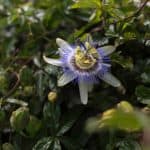Last updated on March 21st, 2022
Our site is reader supported, this means we may earn a small commission from Amazon and other affiliates when you buy through links on our site.
Passiflora caerulea, also known as Passionflower, is a semi-tropical flowering and fruiting plant that brings some of the most unique flowers to your garden. With regular pruning, you can promote even thicker stems, increase flowers, and subsequently increase fruit production which is a nice late feature on its own. Trimming your shoots while they are growing will help them to remain in a specific area rather than taking over the entirety of your garden because they can be vigorous if not controlled somewhat.
How to prune Passionflowers
Pruning young plants
Pruning your passionflowers should first be done when the plant is young so that you can train it properly. You can also help to promote thicker annual growth and increase the production of the flowers.
Pruning overgrown plants
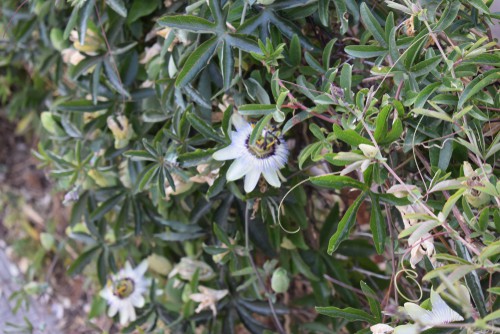
Alternatively, if your plant is neglected or damaged you can rejuvenate it with hard pruning to around 2ft from the base of the plant. Prune your passionflower in early spring but be prepared to get very little flowers for the next year or two. You will, however, be rewarded with lots of new shoots that you can use to form a permanent framework.
When to Prune
The best time to prune your passionflower is at the end of winter or early spring because your plant is not yet actively growing, this means that any cuts you make won’t hurt the flower buds. Remove any broken or diseased wood initially and then remove stems so that you cut back to a handful of healthy buds. You can choose to leave your climber unmaintained without doing a lot of pruning but this might result in fewer flowers and fruits, and they can get a little scrambled. Trimming lightly on a regular basis can help keep the annual growth in check and to a permanent shape or size.
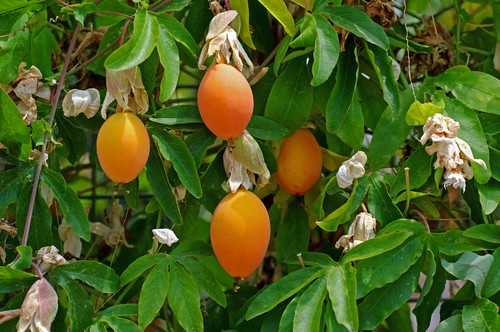
Training a Newly Planted Passionflower
When your plant is newly planted, training the shoots will help to produce more vigorous growth. By the second year, pruning is incredibly important to create a stronger framework and at this point, you should cut your plant back to the strongest one or two buds above the previous year’s growth. This pruning step should be undertaken at the beginning of Spring and it will help to produce thicker growth as well as more peripheral stems for flowers. By the third year, your plant will have properly filled out to the point where it will produce many flowers and fruit.
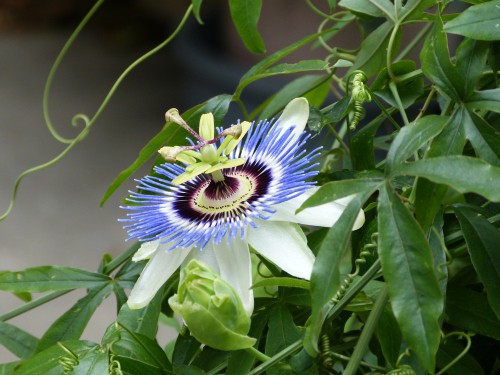
How to Train Passionflowers
Passionflowers grow incessantly and they will crawl up any vertical surface you have. Without some sort of support structure, they will creep across the ground and take over the space of any other plants.
To that end, it is important to give them some sort of support and properly train the vines so that they remain wherever you want them to grow and nowhere else. This is something you will have to do regularly because of how quickly they grow. If you neglect them, even for a few weeks, you will find that you have almost a metre of growth (in some cases) that has perhaps clung somewhere you don’t want it to.
Each of the vines will wrap their tendrils around whatever surface is nearby and if you’re not careful and neglect training them, they will wrap their tendrils around one another and this will eventually choke out the airflow.
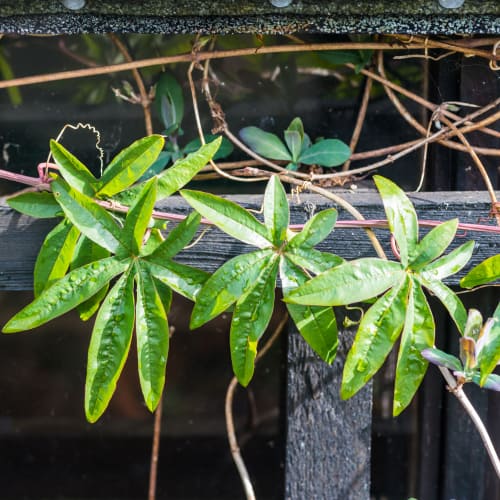
So give them something to wrap around, and you can even physically wrap some of the thinner vines as they are growing and their tendrils will naturally secure the vine to whatever surface you have. It is best to wrap them around things like fences, trellises or arbours. If you are aiming to cultivate fruit and flowers, you want to make sure that you train them properly and prune them in early spring, although not too hard, so that the entire plant enjoys a sufficient amount of exposure to the sun which leads to more flowers and fruit.


